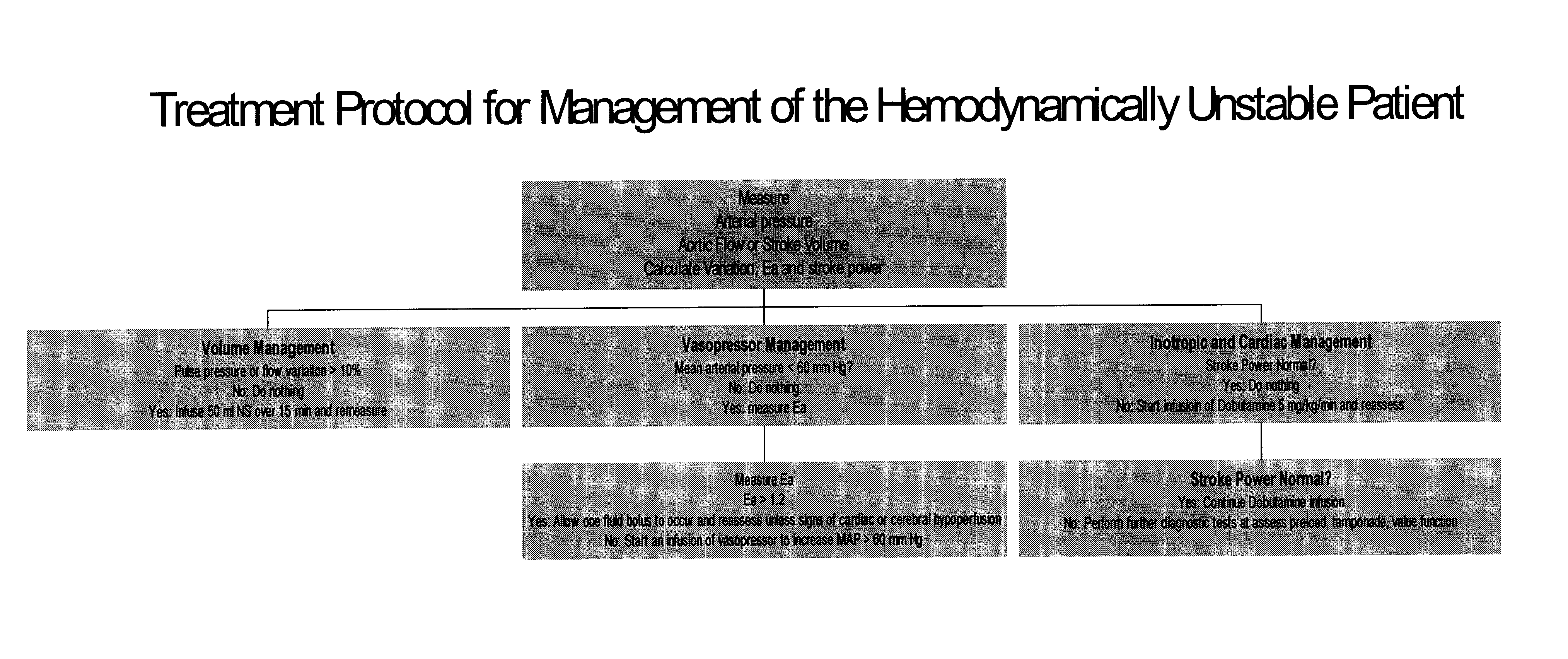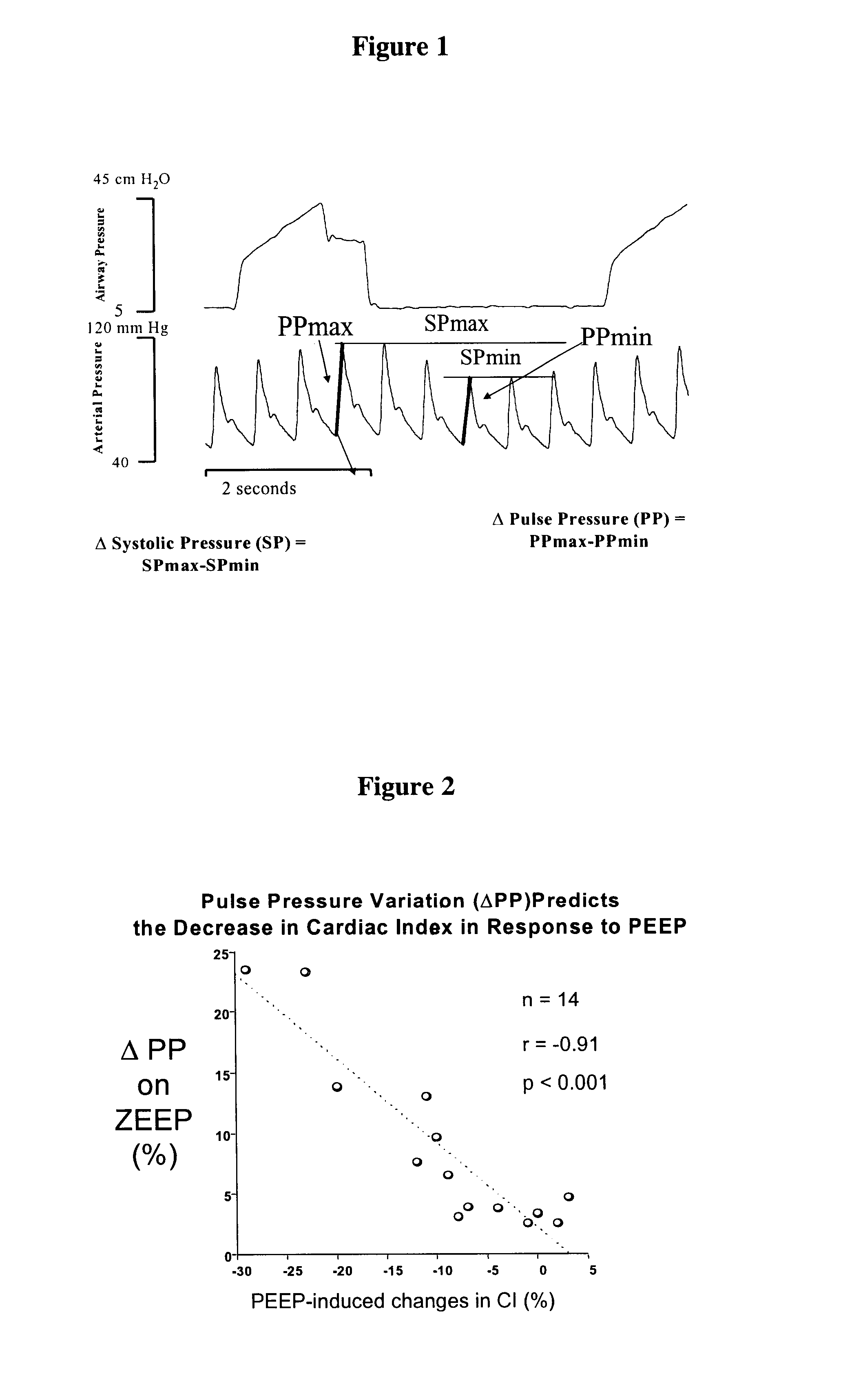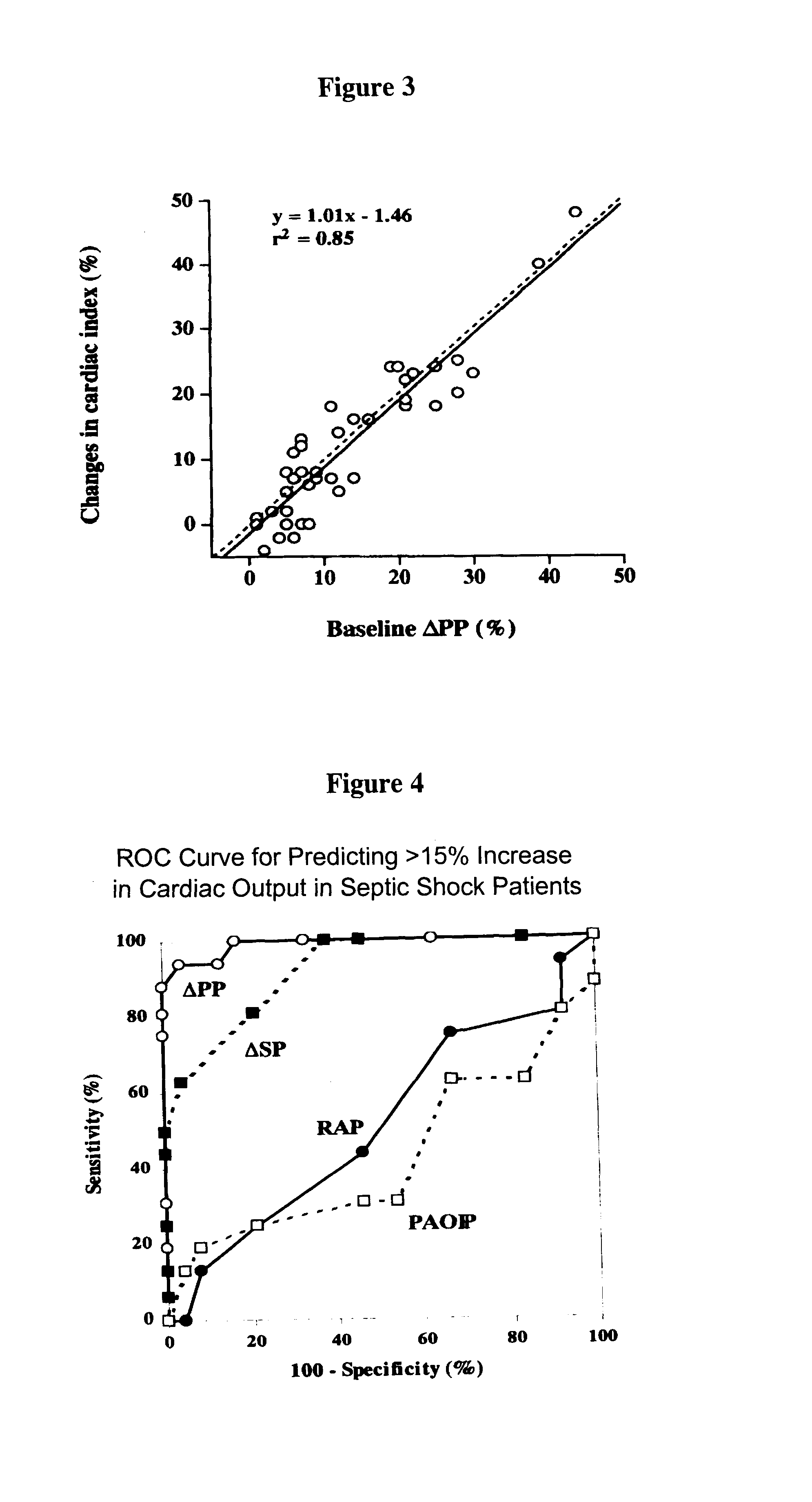Use of aortic pulse pressure and flow in bedside hemodynamic management
a technology of aortic pulse and flow, which is applied in the field of bedside hemodynamic management, can solve the problems of limited application of arterial elastance analysis, inability to measure stroke volume on a beat-to-beat basis, and inability to directly address treatment protocols
- Summary
- Abstract
- Description
- Claims
- Application Information
AI Technical Summary
Problems solved by technology
Method used
Image
Examples
example 1 -
Hemorrhagic Shock
A 56 year old Hispanic farmer with a history of adult onset diabetes, hypercholesterolemia and mild hypertension presents to the emergency room with a two day history of abdominal pain, nausea and over the past day and half black tarry stools. Since this morning, he has felt extremely lightheaded and nearly collapsed when trying to stand upon arising. On exam, he is distraught, BP is 100 / 30, mean 58 mm Hg, heart rate 110 with an increase in HR to 135 and decrease in BP mean to 45 mm Hg with sitting. While a diagnostic evaluation is proceeding to identify the cause of this problem, the measures of arterial pulse pressure by an indwelling arterial catheter and stroke volume by an esophageal pulsed Doppler monitor are instituted using the treatment algorithm. The initial measures are shown in the panel opposite and command the physician to give volume and reassess in 15 minutes.
The repeat measures at 15 minutes show that blood pressure is increasing and heart rate decr...
example 2 -
Cardiogenic Shock
A 64 year old retired secretary with a 25 pack-year smoking history, social alcohol intake and a positive family history for coronary artery disease was seen by her gynecologist for bloody spotting and by Pap smear and punch biopsy found to an a cervical carcinoma. Her other complaints were swelling of her ankles that had increased markedly over the past few months. She was admitted to the hospital and following a negative work up for metastasis successfully underwent a vaginal hysterectomy. She initially did well, until the second post-operative day when she complained of severe chest pain, profound shortness of breath and a near syncopal episode. On evaluation, she is grossly cyanotic in obvious respiratory distress with a heart rate of 105.
The acute response team was called and intubated her tracheal and immediately transferred her to the surgical intensive care unit. Wherein she was found to be hypotensive, tachycardic but with SpO.sub.2 >98% on an FiO.sub.2 of ...
PUM
 Login to View More
Login to View More Abstract
Description
Claims
Application Information
 Login to View More
Login to View More - R&D
- Intellectual Property
- Life Sciences
- Materials
- Tech Scout
- Unparalleled Data Quality
- Higher Quality Content
- 60% Fewer Hallucinations
Browse by: Latest US Patents, China's latest patents, Technical Efficacy Thesaurus, Application Domain, Technology Topic, Popular Technical Reports.
© 2025 PatSnap. All rights reserved.Legal|Privacy policy|Modern Slavery Act Transparency Statement|Sitemap|About US| Contact US: help@patsnap.com



